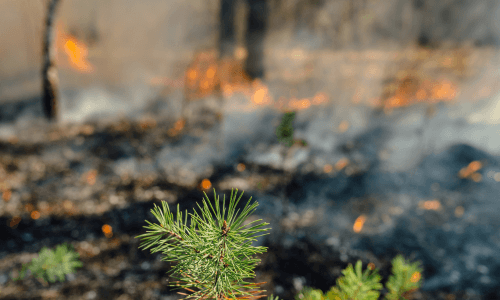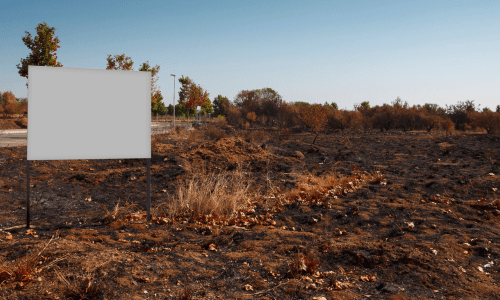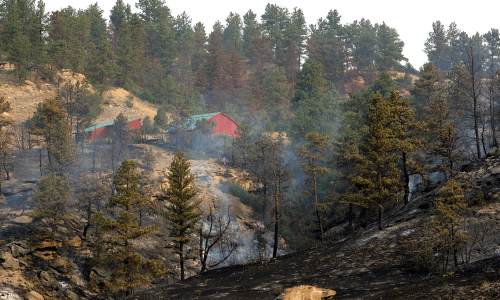Wildfires have been devastating natural disasters for centuries. Every year, thousands of wildfires occur in different parts of the world, leaving behind a trail of destruction. The aftermath of a wildfire not only affects human life and property but also the environment. The effects of wildfires on soil can be long-lasting and sometimes irreparable. The different ways wildfires affect soil are important to understand as well as how long it takes for nature to heal the damage. Wildfire Pros and their role in post-wildfire recovery and forest management is essential for helping the community.

Wildfires, in their ferocious intensity, transform the very nature of the soil they burn. The ground beneath the blaze undergoes dramatic changes, with impacts both visible and microscopic. This ecological reshaping influences everything from soil structure to nutrient content, water retention to biological diversity. Understanding the multifaceted effects of wildfires on soil is critical, not just for ecological preservation, but also for mitigating the aftermath of these destructive events and guiding the healing process of these landscapes. These impacts, their duration, and the pivotal role entities like Wildfire Pros play in fostering recovery and sustainable forest management are crucial to understand.
One of the most immediate and apparent impacts of wildfires on soil is the considerable loss of essential nutrients. Fires burn away the organic matter in the soil that stores nutrients necessary for plant growth, such as nitrogen, potassium, and phosphorus. These elements, once volatilized or oxidized by the intense heat, are easily swept away by wind or washed away by rain. This nutrient depletion directly affects the soil's fertility, compromising its ability to support vegetation and leading to a slower recovery and regeneration process post-fire. It is a crucial aspect that wildfire management organizations like Wildfire Pros need to deal with during the restoration process.
Soil erosion is a significant consequence during and after a wildfire. During a fire, the heat destroys plant life and the root systems that hold the soil together, making the ground more susceptible to erosion. After the fire, the lack of vegetation and the creation of a water-repellent layer, or 'hydrophobic layer', beneath the soil surface further exacerbate this issue. Rainfall, without plant cover to slow its momentum or roots to hold the soil in place, washes away the loose topsoil. This erosion could also lead to potential disasters like landslides. This results in the loss of the fertile layer of the soil, reducing its productivity and altering the landscape. The runoff of these eroded soils into nearby water bodies can also have detrimental effects on aquatic life. Remediation efforts led by organizations like Wildfire Pros are crucial in preventing excessive soil erosion post-wildfire and helping the affected areas recover.
 Hydrophobic Soil
Hydrophobic SoilHydrophobic soil is another profound consequence of wildfires. The term "hydrophobic" refers to a condition where soil repels water instead of absorbing it. This phenomenon occurs during a wildfire when intense heat causes organic matter in the soil to release waxy substances that permeate the soil particles, rendering them water-resistant. The formation of this hydrophobic layer prevents water from infiltrating the soil, which exacerbates erosion and runoff issues, hinders the reestablishment of vegetation, and disrupts the natural water cycle within the ecosystem. Understanding hydrophobic soils is a crucial part of post-wildfire management and is an area where organizations like Wildfire Pros focus their remediation efforts.
Soil recovery after a wildfire is a slow and complex process that can span from a few years to several decades, depending on the severity of the fire and the characteristics of the affected area. Initially, the nutrient-poor, hydrophobic conditions may seem inhospitable, but nature possesses an impressive ability to heal. The first signs of recovery often come in the form of pioneer species, hardy plants that are adapted to thrive in such challenging conditions. These pioneers, including certain grasses and wildflowers, help bind the soil, retard erosion, and add organic matter, slowly beginning to restore the nutrient balance. Over time, these harbingers of recovery pave the way for the establishment of more diverse plant communities, as insects, birds, and mammals return, contributing to the ecosystem's natural regeneration. However, this process is delicate and can be severely disrupted by further disturbances or inappropriate intervention, underscoring the importance of careful, science-guided management in post-wildfire recovery efforts.

The professionals at Wildfire Pros are indispensable when it comes to wildfire management and recovery. Their comprehensive knowledge of fire behavior, soil science, and ecosystem dynamics empowers them to devise strategies that mitigate damage, foster recovery, and help prevent wildfires. Their expertise is crucial in identifying the specific needs of each area affected by wildfires, enabling them to implement effective restoration plans. These dedicated professionals work tirelessly to counteract the impacts of fires, employing their skills and scientific knowledge to help nature heal more rapidly and more completely. Their efforts are also geared towards prevention, through measures like controlled burns that reduce the fuel load and lessen the intensity of future wildfires. By doing so, the experts at Wildfire Pros serve as guardians of our forests, playing a pivotal role in preserving these vital ecosystems for future generations.
Wildfires are a natural disaster that can leave a lasting effect on the environment, especially on the soil. Loss of nutrients, soil erosion, hydrophobic soil, and delayed soil recovery are some of the significant impacts of wildfires on soil. However, with the help of Wildfire Pros, post-wildfire recovery and forest management can minimize the damage and prevent further destruction. Taking care of the environment is our responsibility, and we must continue to learn and engage in practices that protect soil from any damage caused by wildfires.
As of 2023, Professional Forrest Management has won our clients over one billion dollars in damages. If you would like to become our next success and receive the compensation you deserve, you can email to [email protected] or call us at (605) 440-2039 for a free consultation with one of our experts and we'll ensure justice is rightfully served.